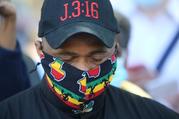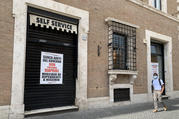Loading...
Click here if you don’t see subscription options
Click here if you don’t see subscription options

FaithThe Good Word
A reflection of the feast of Corpus Christi, by the Rev. Terrance Klein

FaithInterviews
In an interview with Sean Salai, S,.J., Matt Fradd talks about the ways to address pornography addiction, especially among young people.

FaithNews
The gradual opening of churches or planned openings -- with limits on congregation size -- have for the most part come as cities and states announce a gradual reopening of a variety of what they deem as "nonessential" public and private entities, including churches, as the threat of COVID-19 has subsided.

FaithNews
The opportunity to return to Mass -- with restrictions -- since May 18, and the need for ongoing vigilance to control the COVID-19 pandemic have combined in Italy to create a situation in which some people rushed back to Mass and others were convinced it was too soon to be safe.

Politics & SocietyNews
During his homily, Cardinal Kevin Farrell pointed to the "distorted way of thinking" that can sometimes lead Christians "to identify with only one side, distancing ourselves from those who belong to the other side.

Politics & SocietyNews
As the protests over the death of George Floyd continued, more and more Catholic clergy are joining in, lending their voices in demanding justice and human rights.

Politics & SocietyGoodNews
Volunteers work in the gardens on Saturday mornings and produce is donated to the local St. Vincent de Paul food pantry.

FaithVatican Dispatch
“As bishop of Rome, I have decided to institute in the diocese the ‘Jesus the Divine Worker Fund’ to affirm the dignity of work,” Pope Francis said.

Politics & SocietyDispatches
The pandemic will not prove to be an existential threat, but it is likely to change what and how Americans buy and eat. They may be forced to buy food closer to where it is grown or processed.

FaithFaith and Reason
In discerning the necessity to avoid contagion in comparison with the need to offer access to the sacraments, it is necessary to comprehend what is at stake in each area.
